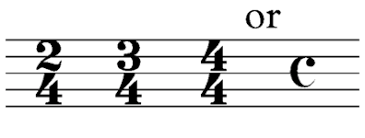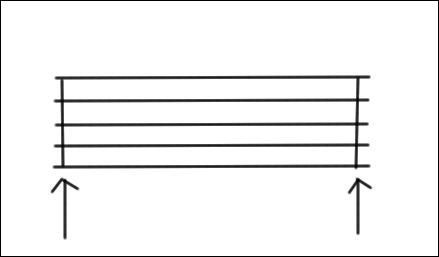Most music – and I mean most jazz, pop, rock, blues, dance, folk and classical music – has a 4-beat metre. We feel the pulse going 1 2 3 4 1 2 3 4 1 2 3 4 1 2 3 4 with beat ONE being stronger. This is often referred to as four-four time or common time. There are four beats in a bar.
The second most common metre is three-four, three beats in a bar.
I just looked through my list of songs from choir and there are only a handful in 3-time: Edelweiss, God Be With You, and Silent Night. You might notice that each of these have a link with either Austria or Switzerland, as does the waltz, which started in Vienna.
The waltz is the classic example of a tune with three beats in a bar. Pick a waltz, any waltz, and you will hear the oom-pah-pah (yes, that song’s in three-time) bassline driving it along.
Here are a few you can try listening to and tapping along with:
Seal – Kiss from a Rose
Verdi – La donna è mobile
The Beatles – Norwegian Wood
Shostakovich waltz no. 2
My Favourite Things
Metallica – Nothing Else Matters
If you try counting 1-2-3-4 on top of these tunes, it won’t work – unless you go really slowly, so that you are saying a number for each whole bar.
What to look for on the page:
Here are some time signatures.

Four-four is by far the commonest time signature so sometimes the numbers are replaced by a letter C to indicate Common Time.
It’s written once, at the beginning of the piece (look, there are no time signatures on the 2nd line of music). You will only get another time signature if it changes during the piece, which is unusual.
You say the two numbers one after the other, top then bottom: Two-four, three-four, six-eight.
The top number tells you how many beats in the bar.
Simple Time Signatures have the number 2, 3 or 4 at the top, and this number tells you how many beats there are in the bar.
(I’ve debated whether to include the next paragraph here, but I decided to put it in for the sake of completeness. Don’t worry if you don’t understand, as we will come back and look at it in detail.)
Compound Time Signatures have the numbers 6, 9 or 12 at the top and you divide that number by 3 to get the number of beats in the bar. 6/8 has 2 beats, 9/8 has 3 beats, and 12/8 has 4 beats. There will be a whole post later about listening to and identifying these time signatures.
With the time signature and the tempo instruction (if there is one!) you have your metre for the song, the underlying template that the notes and rhythms sit on top of.
The pattern a conductor beats usually shows you the time signature and the first beat of every bar is shown by the hand or baton coming straight down.
The first beat of the bar is called the DOWNBEAT. If you get lost you can get back on track by looking or listening for the downbeat.
Vocab of the Week:
Time signature – two numbers written on top of each other at the beginning of a piece to indicate the metre.
Downbeat – the first (strongest) beat in a bar
Common Time – 4/4 time




